TL;DR at the bottom of the blogpost.
A lot has changed since I wrote “Release Day Economics” in 2011 on Tumblr. Bandcamp was acquired, twice. Spotify became a platform for divisive Podcasters and former members of the British Royal Family. And I don’t really know what happened to Tumblr.
The band I founded in 2007, Uniform Motion, released two more albums after 2011’s One Frame Per Second, and then disbanded in 2017.
I released a solo album under the name Richard Andrews and a few records with side projects like Inabreath and Pattern Primitive.
There was a global pandemic in 2020. Touring became more and more difficult. I quit playing and recording music for a year or two as well.
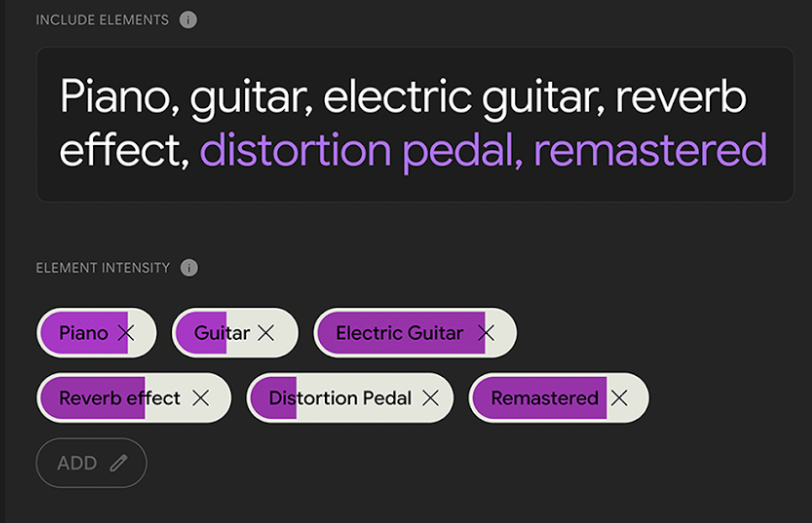
In the last year or so, generative AI, specifically for music, has reached breathtaking levels technologically speaking, as illustrated by DeepMind’s Lyria, Stable Audio and Suno.ai. Will tomorrow’s musicians become like Theodore Twombly in the movie Her, getting paid solely to make handwritten songs for those who are bored by AI music?

If the future of music is prompting an AI to make a song based on a set of parameters – and the models used to make that music are trained on mainstream music – first of all, God help us, we are doomed, but second – it’s hard to believe that the value of songwriting and producing music will increase in this new paradigm. Quite the contrary.
As I prepare to release some new music, which was produced with the help of several new AI based tools, and a music video which was created by bringing to life an old photo of my aunt when she was a kid, I thought I would try to answer the same question I was asked 12 years ago: “As a music fan, how can I best support an independent artist when they release new music?”
Will CD and Vinyl save the music indie-stry?
CD sales rose for the first time in over a decade in 2023 but when you read the fine print, you realise it’s mostly due to inflation and a few major artists like Taylor Swift releasing exclusive collector items. The actual number of CDs continued to decline. The last CD I sold was in 2022. My CD collection is in the attic and I don’t even own a CD player.
Vinyl sales continued to grow (although Taylor Swift accounted for 7% of the total number of records sold!). However, for indies and self-produced artists, wait times are at a record high (6-8 weeks if you’re lucky) and the minimum order is 250 units, which is why my attic is full of heavy boxes.
If you have a large enough fan base to ensure you can sell 250 copies, then it’s still worth producing vinyl. If not, you’re just wasting your money and more of our planet’s precious resources.
Will touring save us?
No.
Will streaming provide sustainable income for indie artists?
I crunched the numbers on my digital revenue over the past 12 years.
The average per stream rate in 2023 was between $0.0026 and $0.006 for music streaming services like Spotify, Apple, Deezer, Amazon (Unlimited and Cloud). And $0.00045 per view for music synced with videos on services like YouTube.
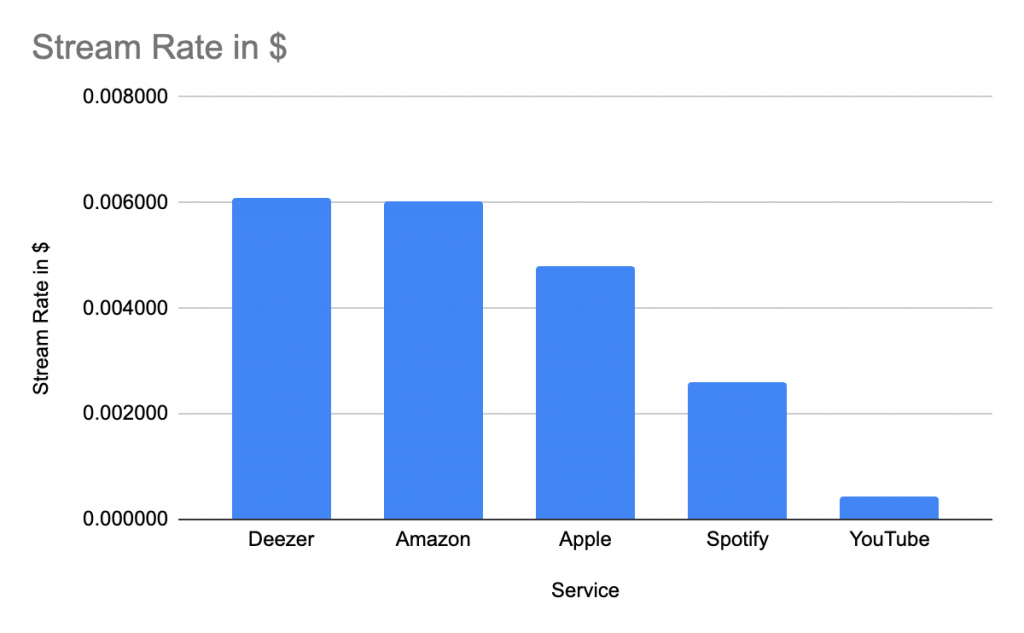
My revenue breakdown
In terms of actual money in my pocket, I calculated the breakdown. Although YouTube provides the lowest per stream rate, it’s YouTube who has been helping me pay for my GAS.
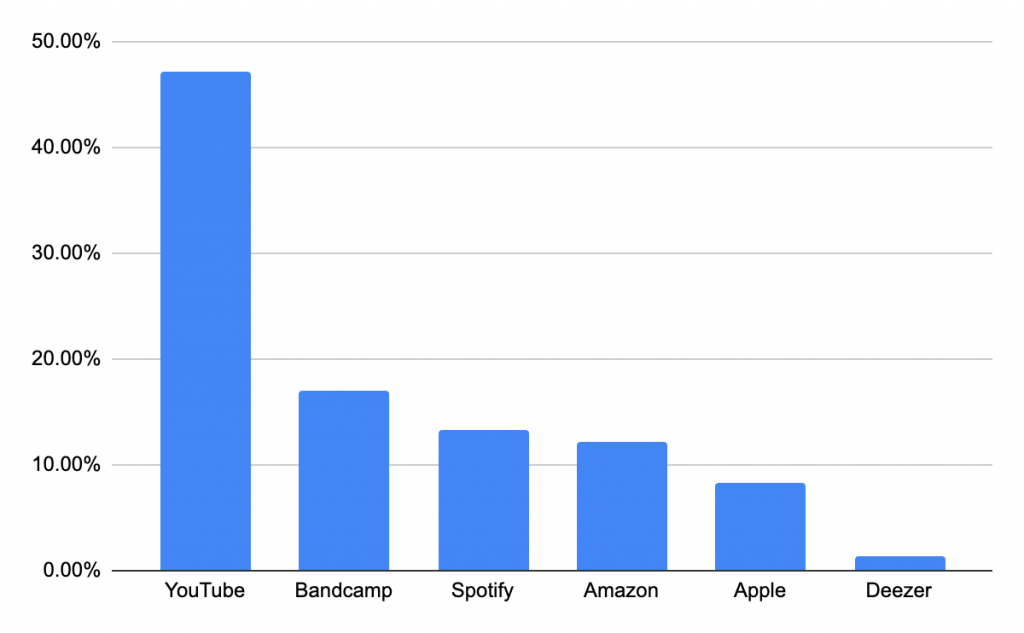
Half of the revenue I’ve earned over the past 12 years has been from people who probably didn’t even know what music they were listening to.
YouTube has by far been the biggest revenue generator for me at 47.21%. To be clear, this is not just my music videos being watched. It is mostly indirect revenue from other people using my music in their videos and YouTube’s Content ID identifying the songs and sharing the ad revenue with me.
Nowadays, YouTubers try as much as possible to avoid using copyrighted music in their videos so they don’t have to share the ad revenue with pesky musicians like me. There are even companies who provide services to YouTubers, which includes scanning their content for copyrighted music. I have a hunch that they’re going to like AI Music the same way I have fallen in love with generative video and AI mastering. It gives you control over the whole creative process and costs a lot less than hiring someone to make a video or master your track.
I only have detailed data since 2018 but it is interesting to see that the average per stream (or view) rate has increased on YouTube over the past 5 years by roughly a . This would indicate that the CPM for a YouTube ad has increased significantly over the past 5 years or that it’s simply because there are more ads. If you’ve been on YouTube recently, you might agree that it’s probably the latter!
YouTube per stream rate has increased since 2018
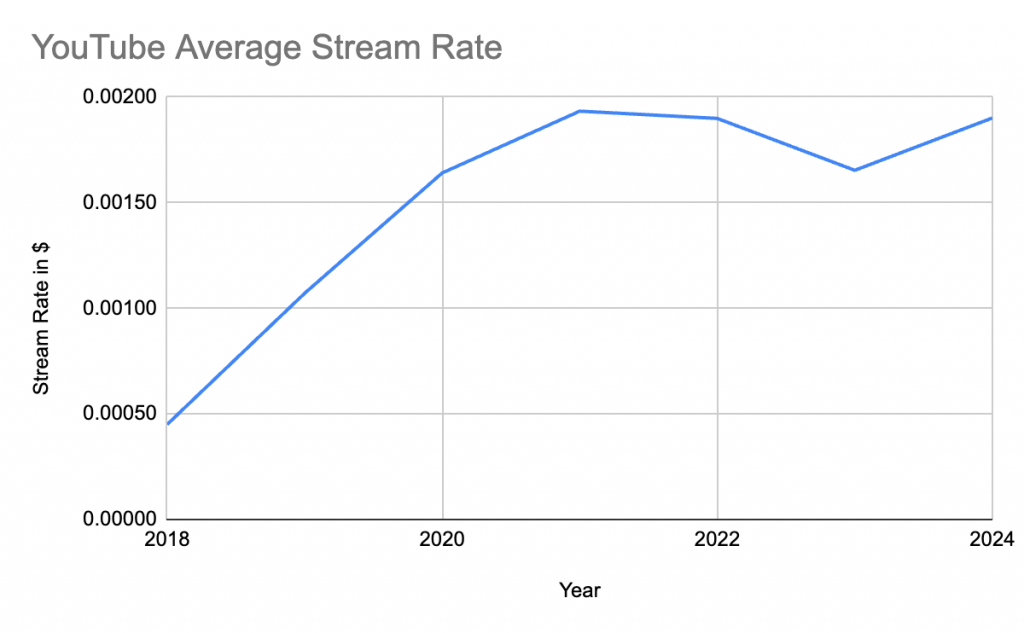
In second place is Bandcamp at 17.01%.
Bandcamp doesn’t pay for streams so this is revenue from people buying my music as a digital download so I can’t really calculate a per stream rate. but I did want to comment on some of the goings on at Bandcamp over the past few years.
I have been using Bandcamp for a long time. I met their founder once. He seemed like a nice guy. During the pandemic, they launched Bandcamp Friday, a day on which Bandcamp does not take a cut to allow independent artists to make a bit more money. Great idea. Thumbs up.
I was intrigued by the Epic Games acquisition in 2022. At one point, I wondered whether Epic Games had acquired Bandcamp in order to use all the music content to train AI models. However, before I could even give it a second thought, Epic Games got slapped with an FTC fine and had to pay out more than $500M, resulting in Bandcamp being sold off to Songtradr, a music licensing company for brands and ad agencies, and having to lay off half of its staff.
In third place at 13.23% is Spotify.
Spotify recently announced they paid out a “Record $4.5B to Independent Labels & Publishers in 2023”.
Trent Reznor has a slightly different opinion on the matter.
“We’ve had enough time for the whole ‘All the boats rise’ argument to see they don’t all rise” Trent Reznor, 2024
Spotify also recently announced they would no longer pay artists like me for any of their tracks that aren’t getting more than 1,000 streams per year. This means that your first 999 streams each year are worthless unless you get one more stream that year. On Spotify’s website, they explain their reasoning. I think this article from Boing Boing explains pretty well how this will affect independent artists like me.
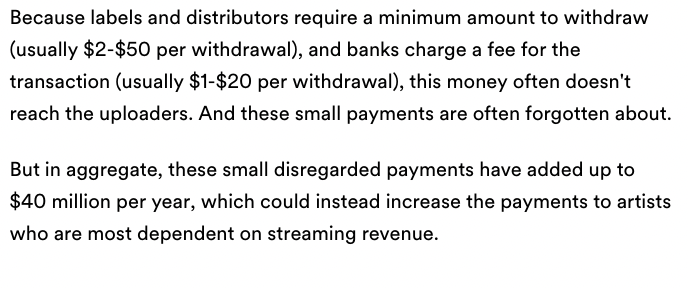
I think I remember a story about a bank teller who put fractions of pennies into his own bank account for years because there was no way of giving a fraction of a penny to customers. He felt he wasn’t harming anyone by taking it. These disregarded fractions of pennies added up to a pretty nice sum of money, which resulted in the bank teller going to prison. It’s called theft apparently.
At the very least, they should make it at the label or artist level, instead of single tracks but I suppose every penny counts. Except when they need $250M for Joe Rogan and $20M for Harry and Meghan (although apparently, that deal fell apart when the former royal couple failed to deliver on their content commitments.)
And now they’re allegedly fining indie musicians $10 per song if they suspect they may have used stream generating services.
But let’s get back to the numbers. I calculated the average stream rate on Spotify for each year since 2011 and it dropped steadily from $0.0061 in 2011 to $0.0026 in 2023. That’s a 57% drop in total. According to the Bank of England, we have seen 41.6% inflation during that same period.
There are likely multiple factors causing the per stream rate to go down. The addition of podcast listening hours could be mechanically lowering the total number of hours users spend listening to music.
Another possible reason is that they have a large number of family accounts. You get 6 premium accounts for $16.99/month with Spotify Family instead of paying $10.99 as a single user. Ironically, I was thinking about cancelling my Spotify premium subscription recently and realised that my kids would be livid if they didn’t have their Spotify accounts anymore!
A larger number of ad based users compared to paid subscribers could be another reason. If you add to that the emergence of AI generated music, it is plausible that the per stream rate on Spotify will continue to decline in the future.
Back in 2011, Spotify came across as the villain. It doesn’t look like things have changed that much.
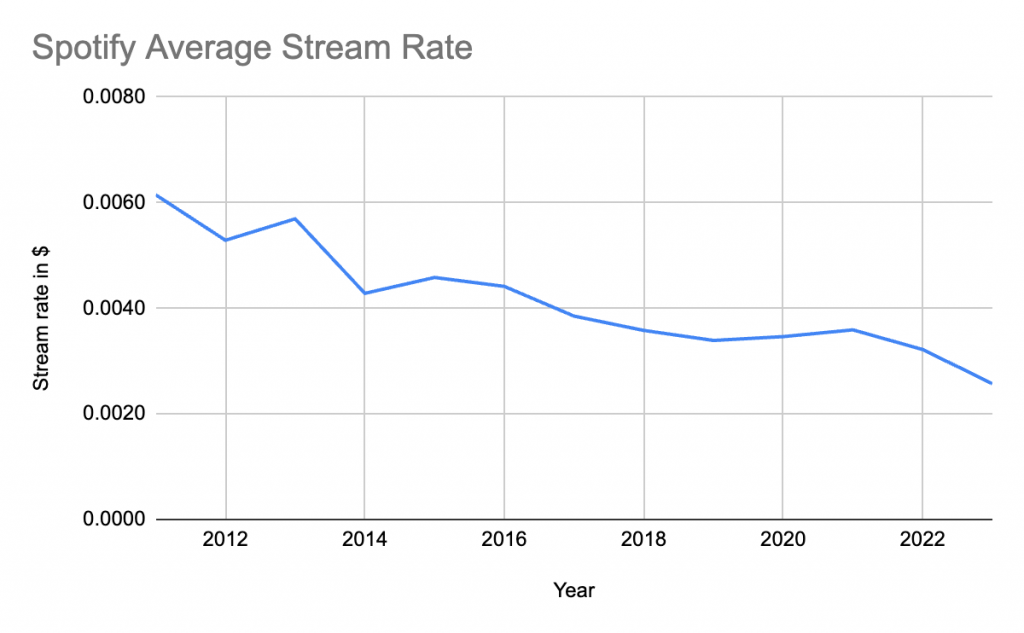
I was surprised to see that Amazon had taken 4th place in front of Apple. I’m not sure any of these services can singlehandedly support an indie musician in 2024 but let’s look at their average stream rates over the past few years.
Amazon, Apple and Deezer account for about 20% of digital revenue.
Amazon’s average stream rate dropped by about 25% between 2017 and 2023. To be fair, Spotify’s per stream rate also dropped by 25% during the same period.
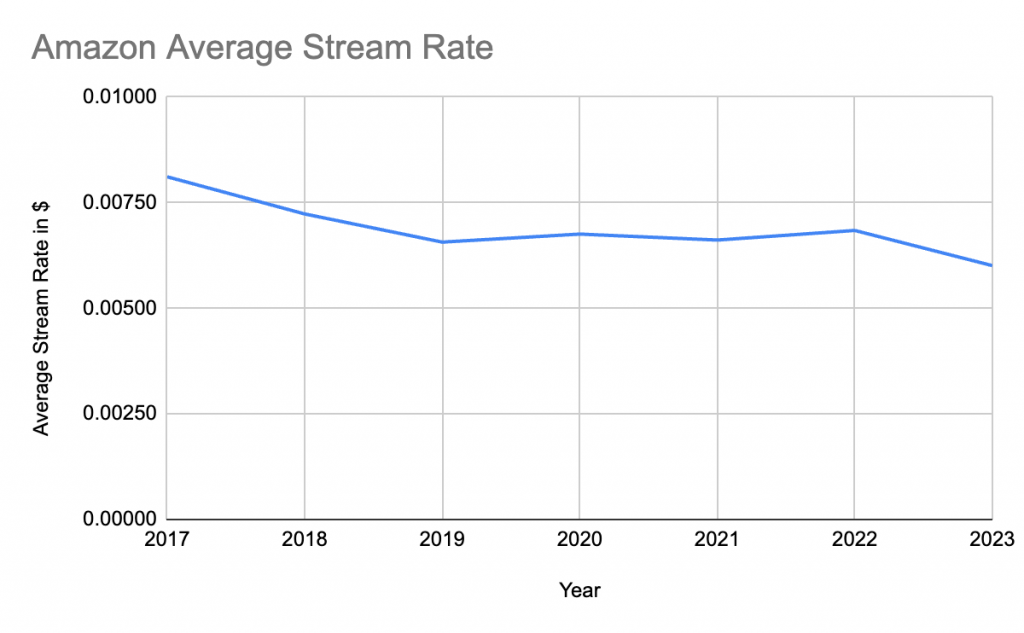
Apple’s average stream rate has gone up and down but if we look at the past 6 years, it dropped even more than Spotify and Amazon, with a 36.5% decrease.
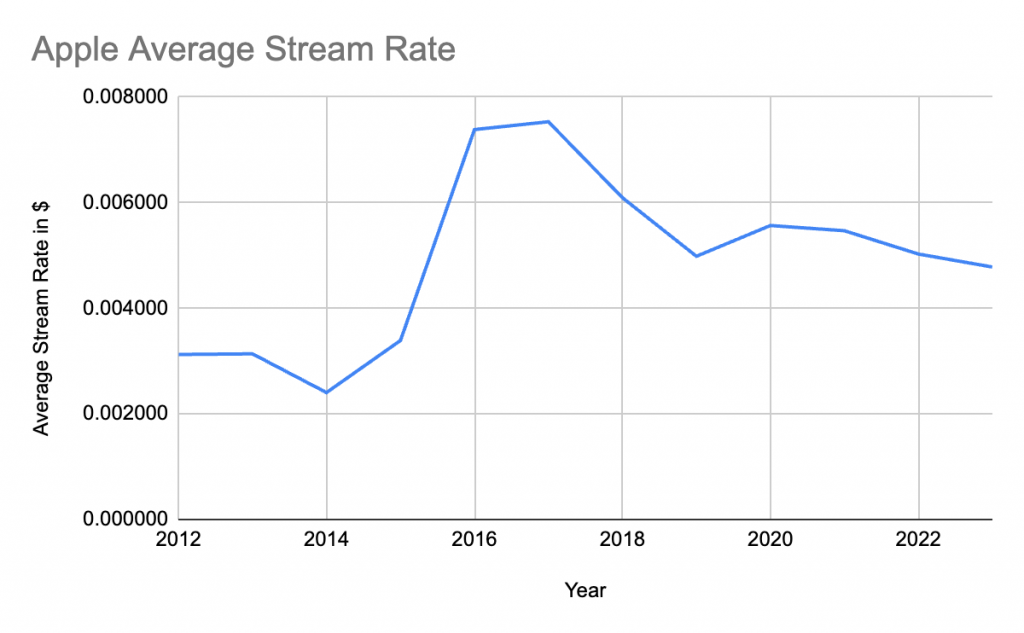
The only service to have seen a per stream rate increase is Deezer, with a 20% increase since 2017.

So what should we do?
The first thing I plan to do is to stop promoting Spotify or any other paid streaming service for that matter. For the past decade, artists have been promoting these services, linking to them when they release their new music. Fans have been signing up for Spotify, Apple Music, Deezer and Amazon while the value of streaming a song has decreased significantly.
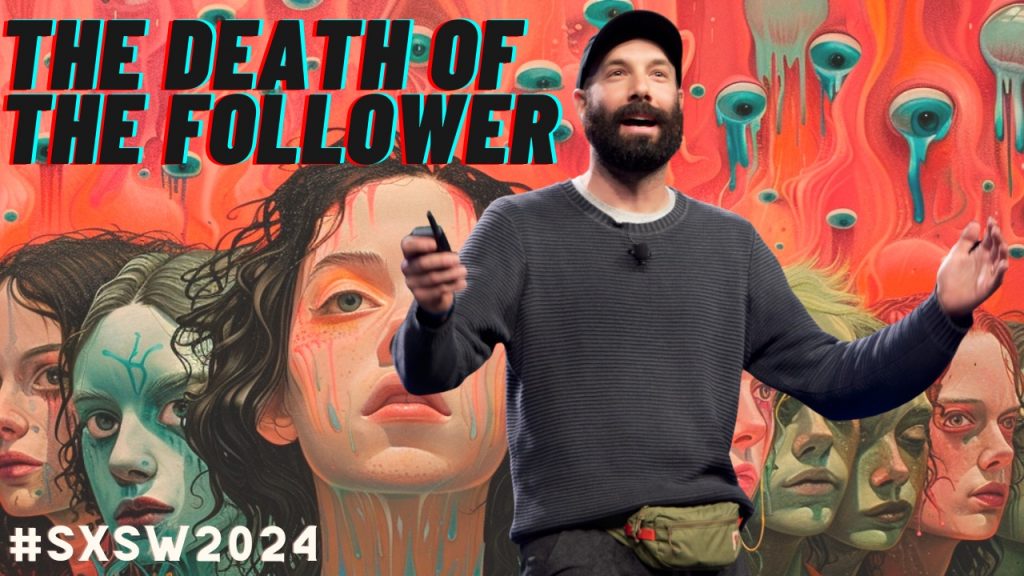
Until a few days before posting this, I wasn’t really sure if there was anything else I could do until my good friend Baptiste B sent me a link to this keynote by Jack Conte at SXSW this year. Jack is the founder of Patreon and a musician/creator. For some reason, Patreon never appealed to me. The idea of people subscribing to my creative output and paying a monthly fee seemed wrong, probably because I would have felt obliged to make content even if I had no inspiration. But I learned that Jack’s original idea was an output based subscription (per song, video, etc…). The monthly option was added later with him kicking and screaming.
A few things resonated with me in the keynote.
- Jack’s story reminded me a lot of my own musical journey with a few key differences. He’s more American, charismatic, talented and successful than me and has much better facial hair!
- I have definitely been feeling the frustration since post ranking on social networks started. You spend years building up a fanbase on Facebook and then Facebook starts hiding your posts from your fans unless you pay them. I gave up on Facebook about 4/5 years ago.
- The new version of Patreon includes everything I have been looking for. It’s not just a paid subscription service. There’s a free version and fans can also pay for individual pieces of content.
I decided to give it a go. If you want to support me, please go to my Patreon and sign up. I’ll only be using the free version for now. And I’ll make high quality audio tracks available to purchase as well. And who knows, if I reach 1,000 subscribers, maybe I’ll start a paid subscription.
TL;DR: streaming has eroded the value of indie music over the last 12 years. AI music will probably finish the job. In the meantime please sign up for my Patreon. It’s free!
“Obscurity is what kills artists. Until AI takes over. ” ChatGPT, April 1, 2024